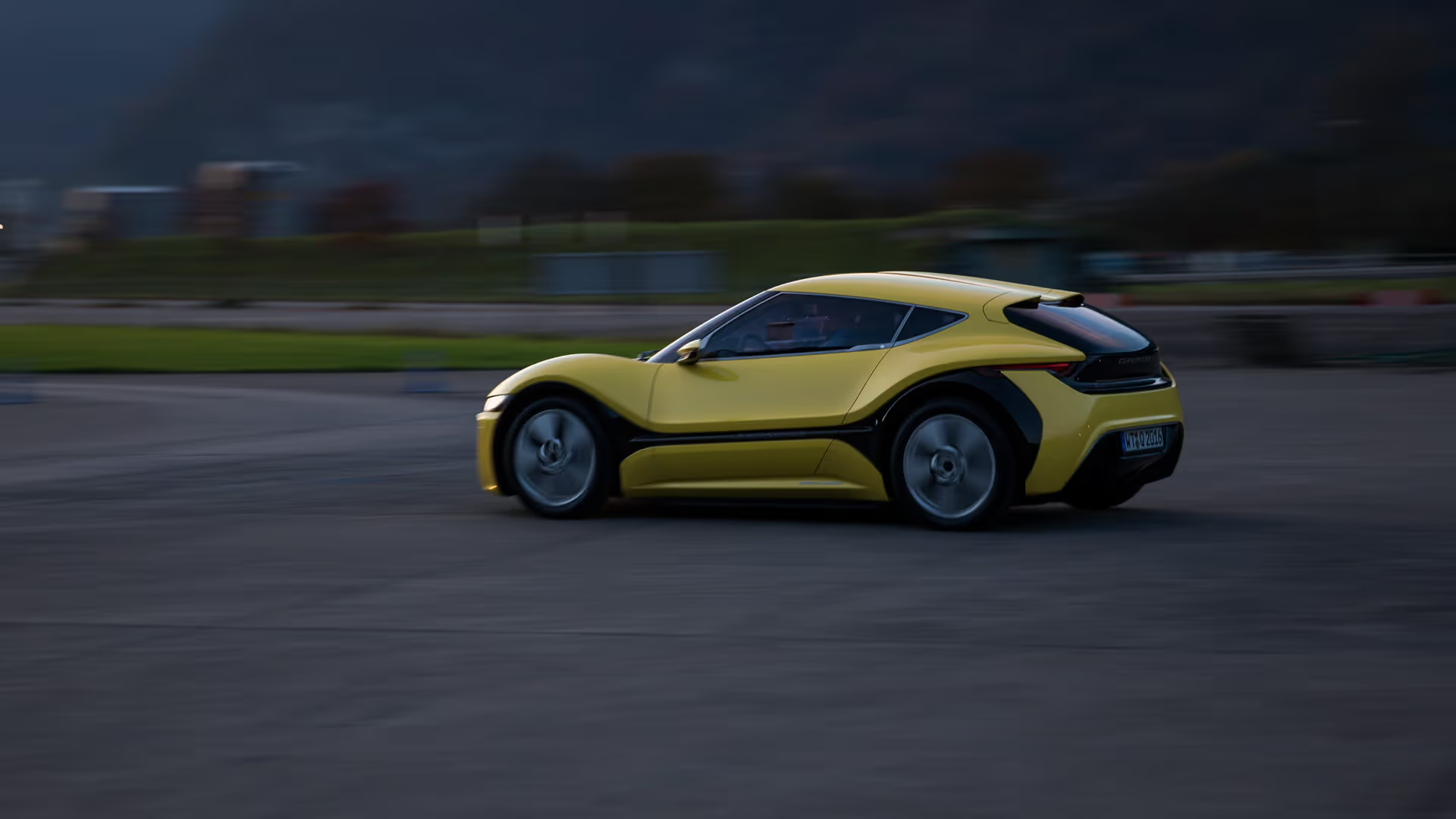The QUANTiNO is unloaded. Today marks the first test of an electric vehicle powered by a nanoFlowcell without supercapacitors (supercaps). The energy for the electric motors will come directly from the flow cell, with no intermediate energy buffer. If the experimental configuration (nanoFlowcell → electric motor) functions as expected under “stress,” it would represent a further milestone in automotive flow-cell drive development.
Accelerating Change – QUANTiNO in the Fast Lane
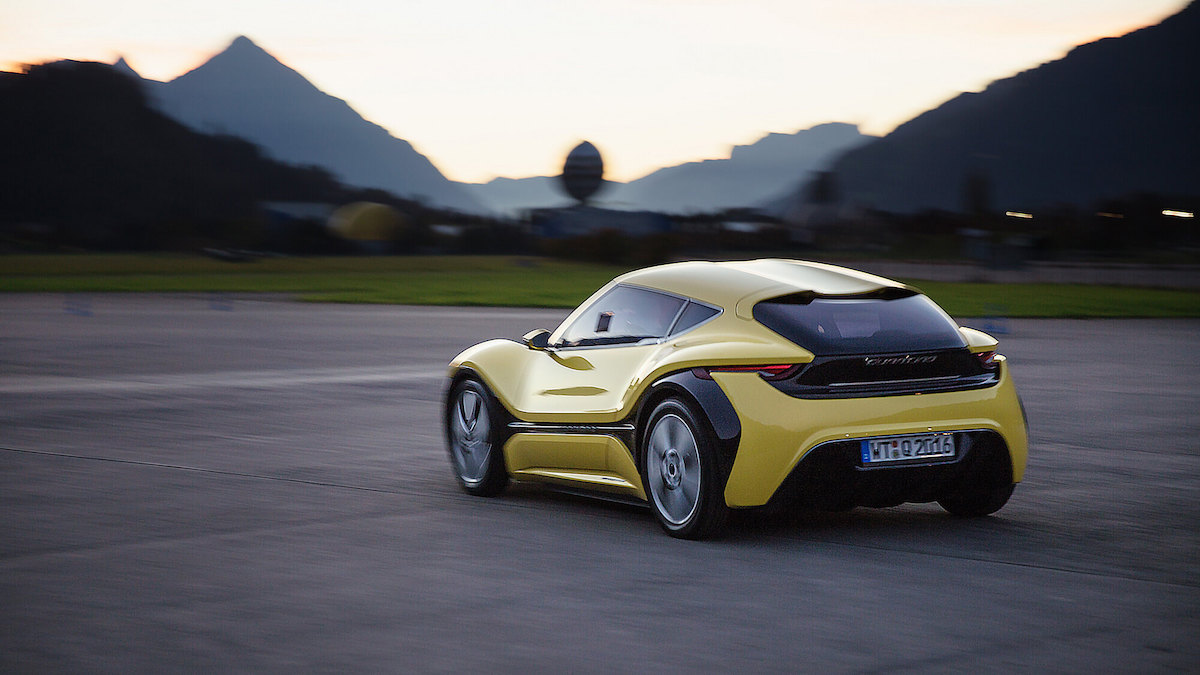
The nanoFlowcell test crew arrives at the former military airfield in Interlaken. It’s a remote facility with virtually no traffic nearby — meaning there are very few onlookers. The airfield features a straight stretch approximately two kilometres long, with large turning radii at the far end. Unconventional, but sufficient for the spontaneously organised, unplanned test drive with the QUANTiNO.
The snow-covered surrounding mountains offer a dramatic backdrop — however, winter is just around the corner, and despite sunshine, the outside temperature never rises above a frosty four degrees Celsius.
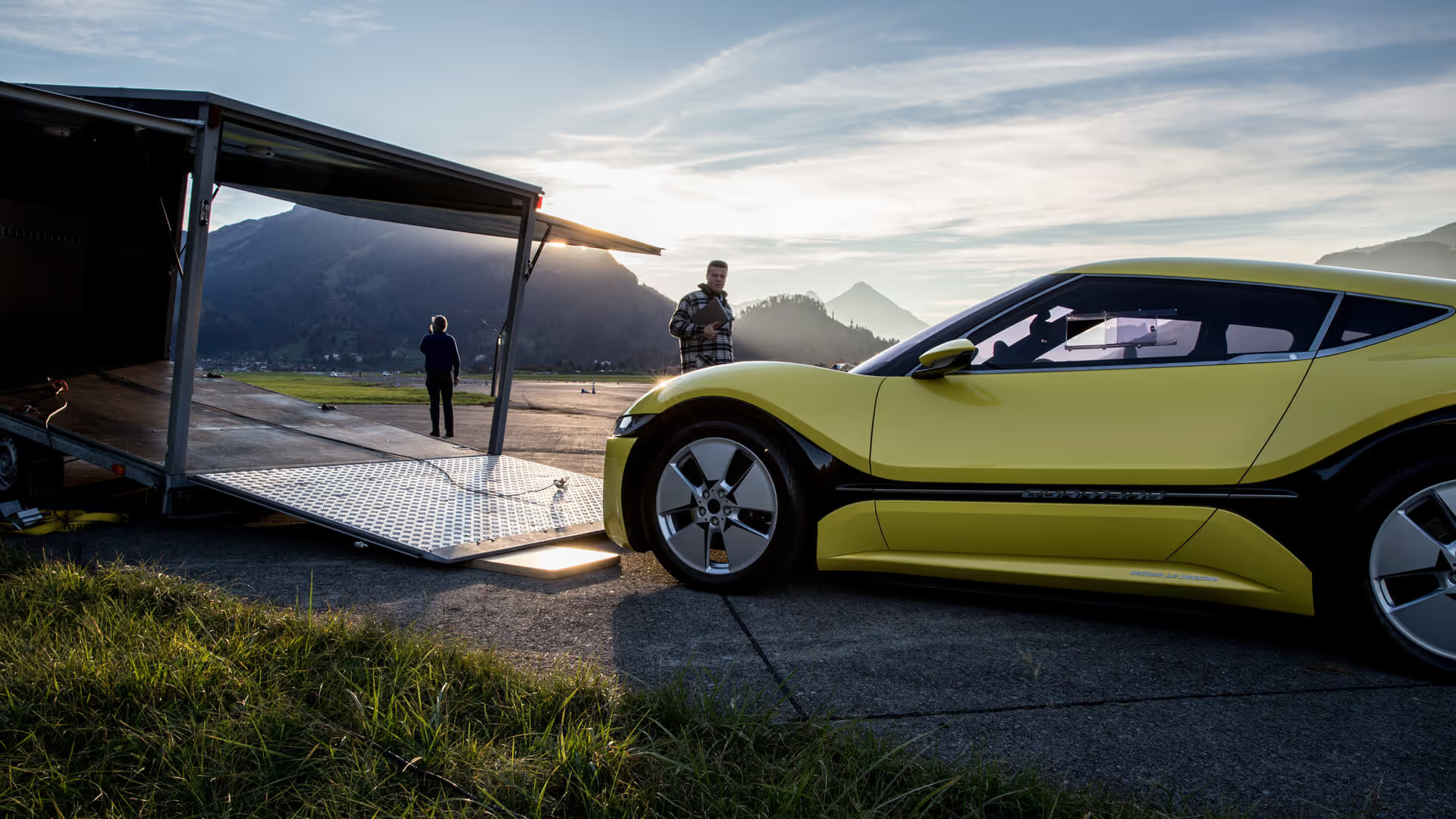
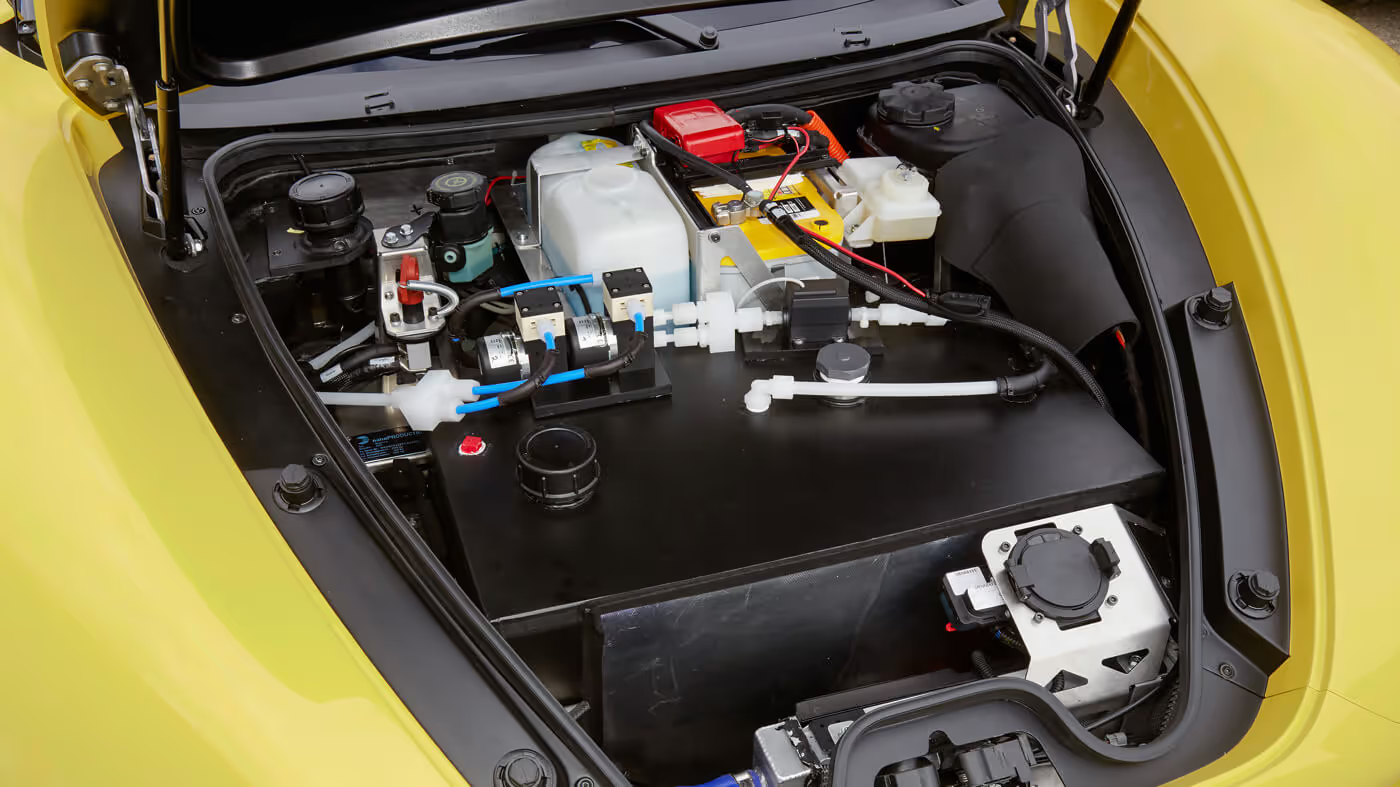
Years of research have been dedicated to this streamlined, more cost-efficient solution, but simulation results have always suggested unsatisfactory performance for a prototype in real-world conditions. Recently, persistent issues with the control software for the supercaps in the QUANTiNO prompted a decision: bypass the supercaps entirely within the system. After all, the test vehicle functions as a critical research platform for advancing nanoFlowcell, and must remain operational under all conditions.
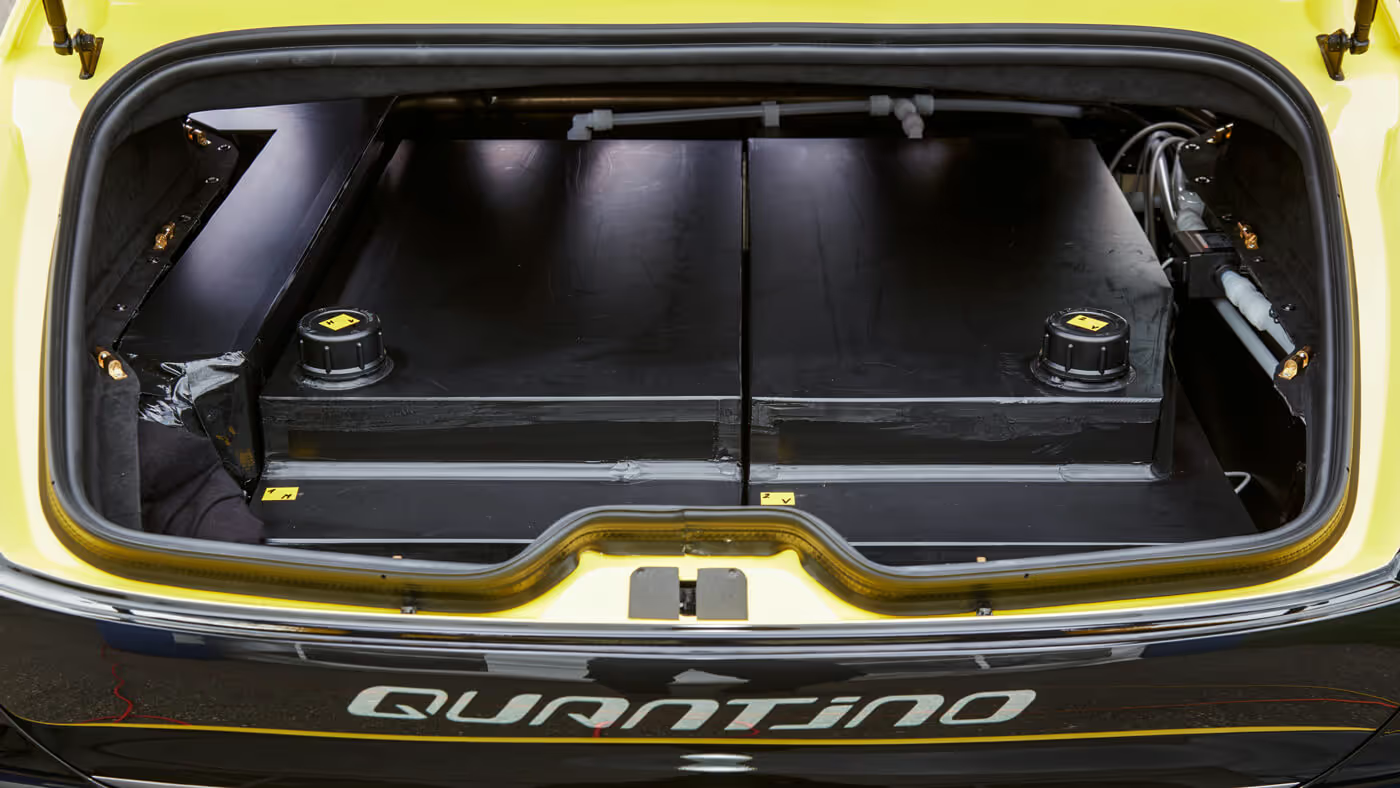
Why were supercaps used originally? In the QUANTiNO, supercaps regulate the energy flow during acceleration and driving. To date, direct regulation of electricity flow from a nanoFlowcell has been impossible — flow cells operate in two states only: “on” (supplying energy) or “off” (no energy output). Supercaps were added to modulate electricity delivery to the electric motor based on throttle position (less energy at lower speeds, more at higher speeds).
In theory, a 48-volt low-voltage flow cell system like that in the QUANTiNO can supply power directly to electric motors — provided the flow cell’s capacity is engineered to meet the drive system’s maximum energy demands. Today’s test will determine whether the engineering team’s theoretical models hold up under real conditions. The development engineers accept lower acceleration and reduced top speed in exchange for demonstrating that this configuration can reliably support further testing of nanoFlowcell technology.
The QUANTiNO drives along the runway at speeds approaching 150 km/h, with sustained acceleration phases on the straights and multiple laps at around 70 km/h. The flow cell delivers a continuous power supply — but not to supercaps; instead, via a DC/DC converter directly to the 80 kW electric motor.
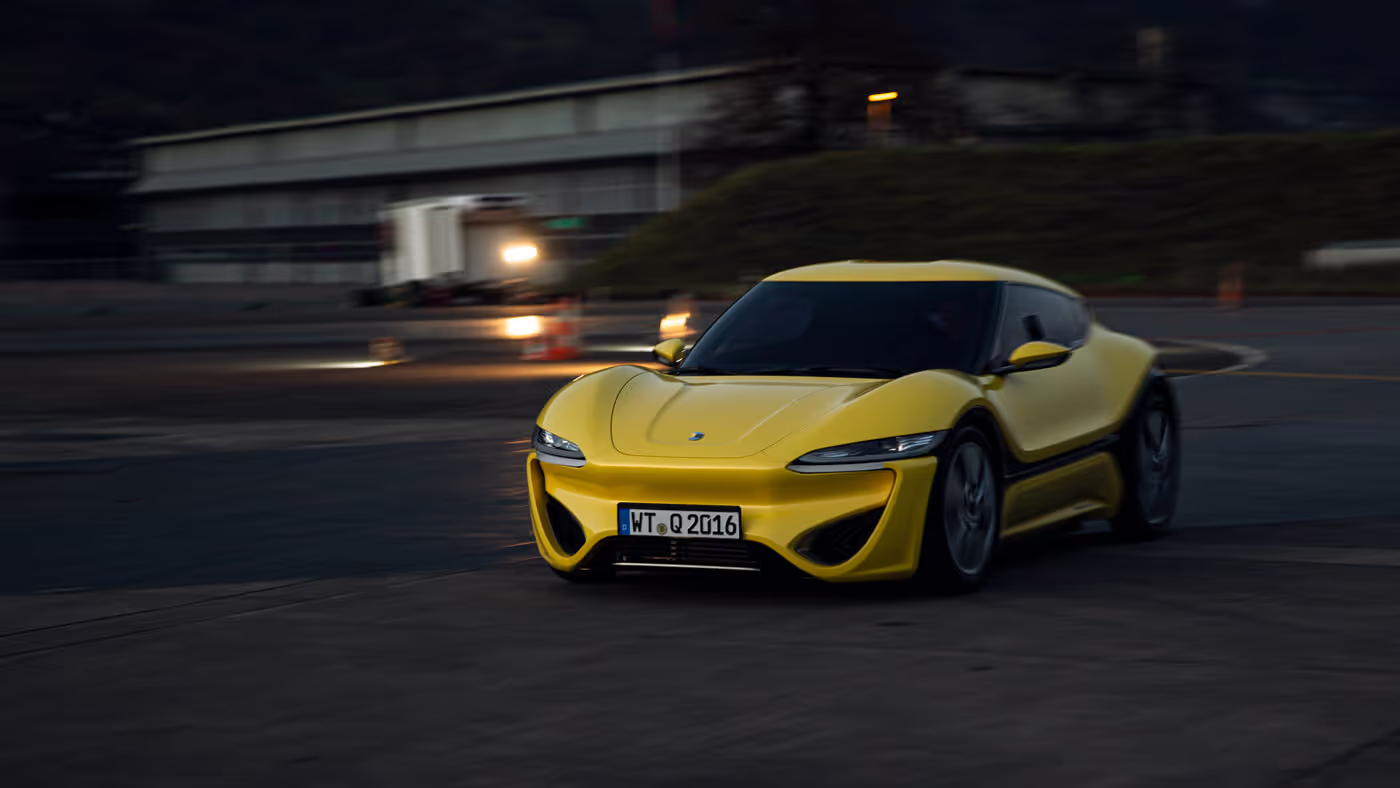
The system is under constant load — uninterrupted. Over more than five hours, the QUANTiNO systems collect measurement data until nightfall — and the appearance of deer on the strip forces the test to stop. By day’s end, enough data have confirmed the engineering predictions: it is indeed possible to regulate a flow cell in an automotive electric drive using measurement control. To an outsider, that may sound concise — but for the nanoFlowcell development team, this day in the QUANTiNO made history: the first electric car drive powered by a flow cell managed through measurement-control techniques.
An electric-vehicle architecture without supercaps means a marked reduction in system weight and cost. It represents a significant engineering milestone in nanoFlowcell development. Naturally, the development of a control-managed nanoFlowcell is not yet complete. The evaluation and analysis of the measurement protocols will guide engineers in refining system details.
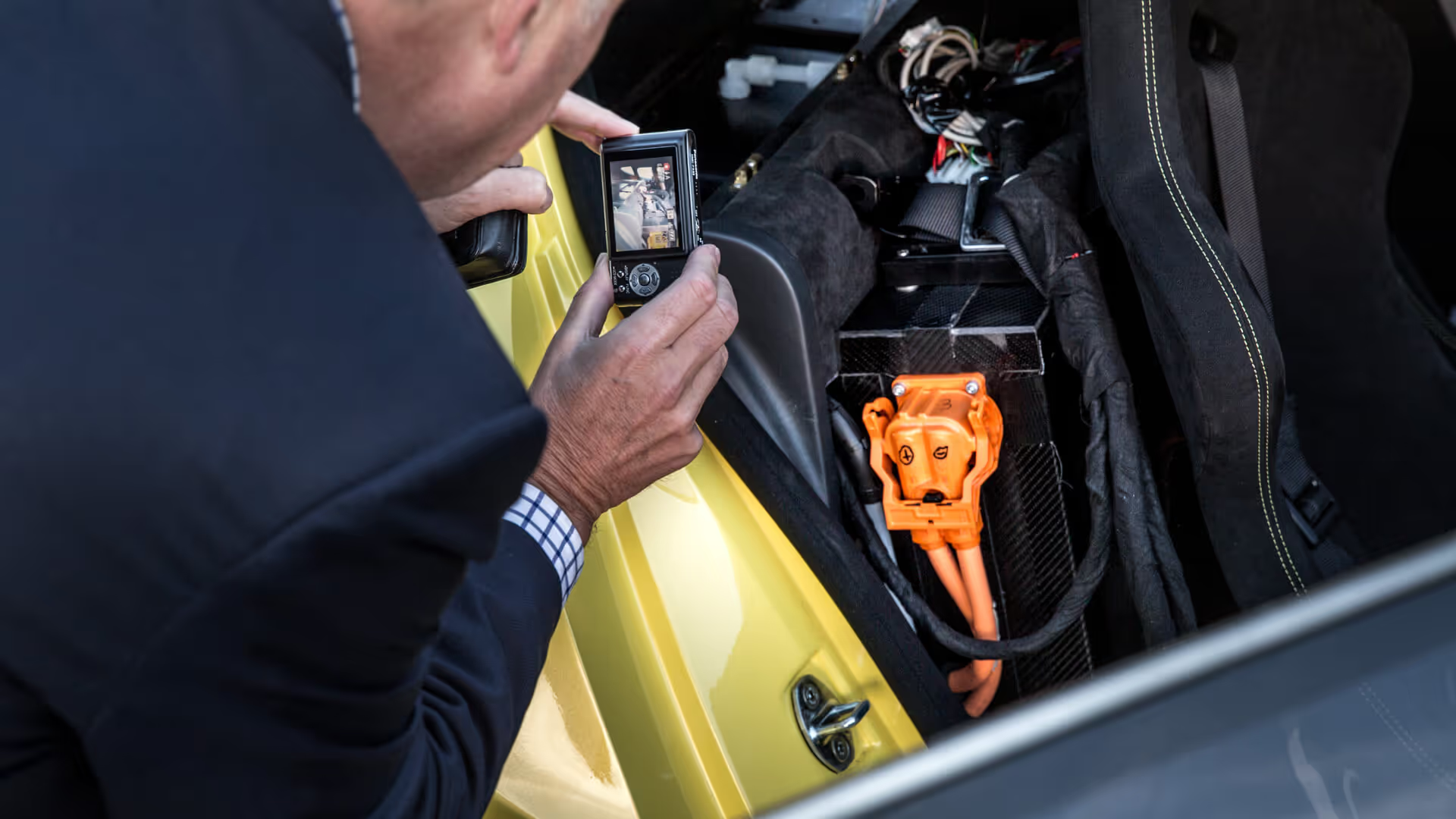
The QUANTiNO is the only road-legal electric vehicle using a 48-volt low-voltage drive system — making it the electric vehicle with the highest achievable functional safety. Its nanoFlowcell drive also renders it among the most environmentally favourable EVs. By eliminating supercaps, the nanoFlowcell low-voltage drive system is streamlined — yielding weight and production cost benefits that now make the QUANTiNO the most efficient EV concept from an economic viewpoint as well.
In terms of performance and efficiency, the nanoFlowcell low-voltage drive system is now surpassing conventional internal combustion engines and battery-electric drive systems. It is proving itself as a forward-looking paradigm for the technical architecture of future electric vehicles.
